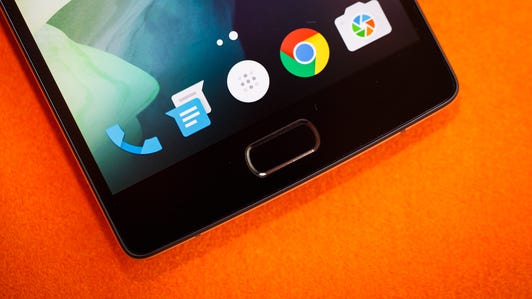
OnePlus
You’ve heard of Apple, Samsung, Motorola and Google. Now, a Chinese startup called OnePlus hopes you’ll think of it too.
When the company last year unveiled the OnePlus One, the newest entrant into an already crowded smartphone market, it was sleek, affordable and well-reviewed. It was also only sold by invitation and in limited quantities.
The OnePlus One became the smartphone geek’s smartphone. The $249 phone ran CyanogenMod, a stripped-down version of Google’s Android software for mobile devices. It was well-liked among hardcore Android fans. To date, the company says it has sold almost 1.5 million devices.
The company’s next act is even more ambitious, with a device appropriately named OnePlus 2 . The device, being unveiled Monday night, will cost $329 without a contract and will still only be available on an invite-only basis. But this time, the company’s prepared for excited fans — it will have as many as 50,000 phones ready at launch.
There’s also more at stake. When the Shenzhen, China-based company was founded in in 2013, it was a 10-person team. Now it’s got 900 people strewn across a handful of offices, including ones in Taipei and Bangalore, while the company is also eying an office in Europe. (Carl Pei, OnePlus’s 25-year-old co-founder and global director, says a US headquarters is probably a year or two away.) The OnePlus One was a surprise hit, but with its follow up act, the company has to prove it’s more than just a niche flash in the pan. The new phone has also ditched CyanogenMod in favor of a version of Android developed in-house by OnePlus, which the company has dubbed Oxygen.
Samsung and Apple are the top two smartphone makers in the world. There’s little chance a small startup like OnePlus could topple those empires overnight, but the hype around the upstart company suggests there is more room for competition than previously thought — especially from a two-year-old newcomer with a shoestring marketing budget. The company joins several other handset makers — like LG, HTC or Sony — that have been vying to compete with the market leaders.


OnePlus
That’s why the company initially only made 1,000 smartphones, afraid that if it made too many and didn’t sell them, the company would go under. With such little inventory, OnePlus set up an invite-only system to make sure everyone who wanted a phone could get one immediately, without having to wait for backorders. But people who bought the phone — which was available in 17 countries including the US — began spreading the word, and demand soared.
“It’s had a viral effect,” Pei said in an interview. He swears the gambit wasn’t a marketing stunt: “It was just us getting lucky, stumbling upon this.”
Ramon Llamas, an analyst at IDC, said the company became popular with uber-geeks hoping to see an upstart succeed in what’s often considered a locked-up market. “OnePlus is the Little Engine that Could,” he said. “At the very least, it’s staked its claim as a differentiated Android phone.”
OnePlus isn’t the only Chinese smartphone company looking to make a bigger push in the United States. Xiaomi, whose global vice president was a key executive for Google’s Android mobile operating system, is slowly trying to woo US consumers. It doesn’t have a smartphone available in the US yet, but in May it launched a Web store to lay the groundwork for its inevitable US debut.
Will it all add up?
Pei is brash, young and confident — his Twitter handle is @getpeid and he has a nonstop smirk on his face while he talks about his phone. He was born in Beijing but grew up in Sweden and now shuttles between Shenzhen, the US and Europe living out of rentals on Airbnb, the apartment and home sharing service.
But his goal is lofty. When Pei, CEO Peter Lau, and other members of the early team started the company, they asked each other what was the most user-friendly smartphone maker in the world. They agreed it was Apple. But they could not agree on a clear No. 2.
“No one that made Android phones cared about the product as much as Apple did with their phones,” said Pei. “That’s where we saw the opportunity.”
OnePlus 2 debuts with metal frame and beautiful design (pictures)






+22 more
This time around, the company has a few more tricks — and a bigger budget — to market its new device. Even the launch itself has been beefed up: OnePlus is unveiling the product during a keynote that will be streamed in virtual reality. It can be viewed on Google Cardboard, the Internet giant’s build-it-yourself VR headset.
The company is also setting up popup shops in nine cities around the world, including New York City’s Times Square, where people can try out the phone. OnePlus will also advertise the phone on the giant Nasdaq billboard in Times Square.
Of course, taking on Apple, Samsung and Google is no easy task. Pei said he feels good about the new device but understands the difficulty.
“We’re are super anxious about our second product,” admits Pei. “A lot of people are one-hit wonders.”



